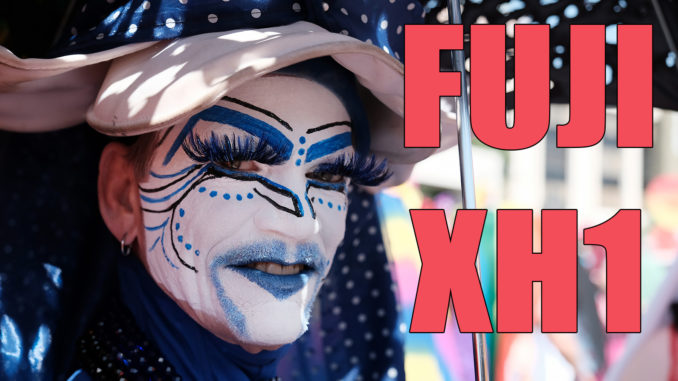
The Fuji XH1 Review. Fuji takes it to the next level.
By Steve Huff
All images here shot with the Fuji XH1 and 16-55 f/2.8 Lens.
Hello guys! It’s been a while since I had a new camera in hand to full review and evaluate but as I said in my last couple of posts, I’m back and refreshed and ready to take a look at this new Fuji XH1, which I almost passed checking out due to the larger size and heft for being APS-C. I am glad I did not pass as every day that I spend with this camera and the 16-55 f/2.8 Zoom is another day I am enjoying it more.
This is a different kind of Fuji, and not only has Fuji truly upgraded this camera in the build quality department, they also did so in MANY areas such as speed, video and EVF. The soft touch shutter may be the nicest shutter I have ever experienced. Lately I have been shooting with Sony (A7RIII, A9, etc) and for mostly the last two years my personal every day rig was a Sony full frame of some variety. Yes I also have a Leica M10 and Hasselblad X1D with the M taking over my daily duties but I will admit, this Fuji is something. I will have a bit more on this camera in a follow up post (video use, and a video review) so stay tuned for that.
Only showing a size comparison here between the APS-C Fuji XH1 with 16-55 f/2.8 lens next to the full frame Sony A7RIII and 24-70 G Master f/2.8.
First things first…
I have seen a myth or two about me and Fuji in internet land more than once and to be clear, NO I DO NOT and never have “hated” Fuji. While I have not “loved” Fuji for a while, I feel that they have been making strong progress with their camera line. I enjoyed the Fuji XT1 and the XT2. I was lukewarm on the X-Pro 1 and 2 and did not mess around much with the smaller models. I have been waiting for a Fuji that could match a Sony for speed, ISO and Video. I also wanted a beefier feeling body and now here it is!
Does this XH1 compete with a Sony full frame model? Yes indeed it can and does, and it does so with nicer out of camera color. While not quite up there in speed as the Sony it is close. Also, Fuji ISO performance has improved and is now competing neck and neck with Sony, who for me, has been the king of low light sensors for quite a while now. So for Fuji to even get close is pretty amazing. But that out of camera color is what draws many to the Fuji line…
Out of Camera color and I was using the Classic Chrome preset. My fave preset for Fuji JPEGS. 16-55 f/2.8.
So no, I do not hate Fuji, I just wanted to see them make a camera like this, sort of, and they did it. This Fuji, no longer feels “Hollow” to me as some Fuji models do. This one no longer gets super mushy (IQ) in very low light. This model feels, looks and performs much like a DSLR, and it’s almost as big as some, but it is mirrorless of course, has a 24MP APS-C Xtrans variety sensor and from what I see, it is the nicest Fuji sensor I have ever experienced.
So here is my look at the Fuji XH1, with some words, photos and comparisons.
OOC JPEG of my Son Brandon using the Chrome preset. LOVE this preset for OOC JPEGS. Used the 16-55 f/2.8 here. Click it for larger.
I received the Fuji XH1, 16-55 f/2.8
You guys know I am a passionate kind of guy. I do not review cameras like most others do. In fact, these days I am even more chill and relaxed in my reviews and I try to tell you guys about the qualities of a camera that I feel should matter more than tech specs and lab shots alone. I always like to go by the usability, the feel, the design, the size, the weight, the build quality and the speed. I am not interested in doing scientific tests as for me, that has always been something I never got into. If a camera feels good, works good and makes you thrilled to use it while delivering results to your taste, that is all that matters. Life here is short my friends, let’s enjoy it and also let’s be honest with ourselves. All cameras today at this level are fantastic. They will continue to be fantastic. We are at the point where we no longer need to upgrade models every year as a camera like this will last MANY years. If it is good now, it will be good in 5, 6 or even 10 years.
Next to the Sony A7RIII and 24-70 GM, the XH1 and 16-55 (24-70 Equivalent) is smaller but the bodies are about the same size.
While I feel this camera is not perfect (none are), for me, it is as close to it as it gets to it for Fuji, for me. This 16-55 f/2.8 lens is large but smaller than the Sony 24-70 GM and IMO, there is nothing to complain about with the Fuji lens. It is world-class. This is a FANTASTIC 24-70 Equivalent lens in build, and IQ/Color. I am a full frame kind of guy but the XH1 with this lens is looking pretty good. While not to G Master levels, it is smaller, lighter and cheaper by about $1000. That is not chump change my friends. I have a comparison later on down with a Sony and this Fuji along with the 16-55 and 24-70 GM. So you can see the difference for yourself.
The Body
The Fuji XH1 take s a different approach than Fuji has in the past. In fact it reminds me of a “Mini GFX” in the way it is designed and styled through it is closer in size to an X1D than GFX, which is quite larger. With the Fuji being APS-C, having a smaller sensor than the Sony’s full frame models the body is about the same size as the Sony offerings. You guys know I love my Sony cameras, and use them all the time but I will give credit where it is due here.
The XH1 body has a more “photographers” feel to it. The controls, mostly external, are a joy. With its ISO dial, shutter speed dial and all of the external controls it feels more like an old school camera than a modern-day camera. For me, this is a positive 100%. I love not only having these controls at hand, but also the style and design. When you pick up the XH1 the 1st thing you will notice is the solid feeling body. I mean, I have never felt a Fuji like this which is why I used to say other models, like the X-Pro bodies felt hollow to me. Which led to a cheap feel. Fuji used to use cheap buttons that did not inspire confidence but with the XH1 you can tell they were paying much more attention to the details.
The EVF when tested side by side with the Sony A7RIII, is about equal with the Fuji having a better color rendering, and color has always been Fujis strong point IMO. You can go BOLD with a Velvia preset, you can subdue it with the Chrome preset, you can go B&W with the beautiful ACROS simulation and so on. But one thing I have noticed is that skin tone with the Fuji XH1 is fantastic. Not magenta, not yellow, not dull..but “right”. Fuji knows color and with this model and sensor, it is the best I have seen yet from Fuji. Sure, maybe other models were similar and it is just the illusion of the better build, EVF, speed, shutter and lens used but I swear this camera is putting out some of the nicest color I have seen from any camera. But the EVF is large, clear and on par with Sony’s best EVF.
The only complaints I have with the body in my first few days of use is that it feels more like a DSLR in size, and it is sort of blocky (I nicknamed it BLOCKHEAD) but at the same time it offers a nicer grip than my Sony as it allows room for my 3rd finger without using an external grip. So blocky? Yes. Functional? YES.
One thing I am impressed with is the Dynamic Range of this sensor. This was shot in full blazing AZ sun ye the whites stay white and shadows look great.
The Feather Shutter
“Wow” – that was my word when I shot the 1st image with the XH1 as the shutter was soooo nice. So quiet and with such a pleasant sound. In fact it sounds so good, it is almost addicting to fire away! A gentle, soft little snick. Best shutter sound and feel I have experienced, period. Makes my Sony sound loud and clunky in comparison. I will admit though, it almost seems to soft of a shutter as I have accidentally fired it off a few times with a feather touch ; ) By accident. Even so, it feels amazing and sounds even better. When you start using the camera and shooting it for a coupe of days and then go back to any other camera you wonder why other shutters are not as quiet. It feels “luxurious” and “expensive” when you press that shutter. Something you would expect from Leica. In my video review I will post soon I will show the sound from this XH1, my Leica M10 and. Sony A7RIII. The XH1 shutter is SUBLIME.
Some of the Tech Specs of this XH1
This camera offers a 23.4 MP sensor of the now much-loved by many a photographer “X-Trans” type. V III in fact. I used to dislike the X Trans sensors in their earlier version but this one is solid, and I see no issues with it at all. This camera is also speedy, much speedier than I expected and to be honest I was a tad surprised at just how fast and responsive this camera is. We also get the 5-Axis IS in the Fuji, which is good to see (though no one does it better than Olympus). 4K video with F-log gamma, 3.69 M Dot EVF, 3″ LCD, 325 Point AF system, and the awesome top LCD display to show your most important settings. Oh, and yes this is a Weather sealed body, has two SD card slots and is compatible with UHS-II cards. In both slots not just one!
This Fuji comes I at $1899 for the Body only, and in this price range there is some competition, and some very stiff competition.
At $1999 we can go for the full frame technological powerhouse, the Sony A7III. We would gain that full frame sensor, better low light in the extremes of ISO 12800 and up (Fuji JUST ABOUT hangs in with the Sony’s until that point when no NR is used), and the Sony will be faster all the way around. Yes, it beats the Fuji in continuous AF, video AF, and overall speed. But it’s not night and day my friends. With the Sony we also gain longer battery life, a smaller feeling body (slightly).
With the Fuji we gain a body that IMO is geared more towards photographers with the external controls, lenses will be smaller due to it being APS-C, neck and neck ISO until we hit the extremes and a better EVF. I found the A7III AF to be faster, as it should be. It gains its AF from the flagship Sony, the A9.
Debby and checked out the recent Pride Parade in Phx AZ as I knew there would be some great colors there to test the Fuji ; )
BUT the Fuji is no slouch, deepening on lens used. The 23 1.4 I tested has slower AF, and in low light would not AF lock for a few seconds. The 16-55 2.8 is a beast with AF, even in low light. For one shot quick AF it matched the Sony when using this 16-55 lens. For continuous AF, not so much but I do not want to say the Fuji is slow in any way, as it is not. Basically it comes down to this:
Do you want a body with a full frame sensor to exploit the benefits of using almost any lens made, and using all of said lens? With the Sony I can shoot with Leica M glass, Nikon Glass, Canon glass, etc. I also get the full character of these lenses as the sensor allows all of the lens to be used. With the Fuji I can adapt these lenses but we lose the full character of the lens. For some, the control, color and features of the XH1 will beat out the Sony, and for others the Sony will win for what it offers. For video, I did appreciate the new color profile for video by Fuji but still prefer my Sony for video work that I do. I currently use a Sony A7rIII with a Zeiss Batis 18mm and love it for a run and gun super fast AF video setup. I tried the Fuji with the 16-55 but it lagged with AF in video mode, quite a bit, compared with the Sony.
Do we need AF with video? Most will say NO as when you are making a film, you will use manual focus anyway. But for my use, I need AF with video as I do more doc kind of work, run and gun. The Sony is amazing for this though again, I prefer the color from this Fuji in photo and video.
The new XTrans Sensor in the XH1
From Fuji: The FUJIFILM X-H1 features the 24.3MP APS-C sensor “X-Trans CMOS III”, which delivers images with enriched depth. The use of aperiodic color filter array minimizes moiré and false colors even without an optical low-pass filter. When combined with XF lenses, specifically designed for this series of cameras, the sensor achieves outstanding descriptive performance.
From Steve: I agree here. This sensor rocks and is Fuji’s best ever for their APS-C line.
X-Processor Pro
From Fuji: The “X-Processor Pro” is a processing engine that draws out the maximum capability of the “X-Trans CMOS III” high-performance sensor. Its use of large built-in memory and advanced processing power boost the camera’s speed and precision performance in interval shooting, shutter release time lag, AF, continuous shooting, live view display, etc. The processor also supports the Boost Mode for the vertical power booster grip, VPB-XH1, enhancing the camera’s performance to another level.
From Steve: Well, all I know is this Fuji is lag free, fast and gave me no issues in these areas. MUCH better than Fuji’s of the past.
Fuji XH1, 16-55 in full AZ sun, OOC JPEG using the Classic Chrome preset.
Autofocus
From Fuji: The FUJIFILM X-H1 boasts autofocus performance with enhanced capability to track a moving subject. With 91 focus points (up to 325 points), the camera has a phase detection AF area that covers 50% (side to side) and 75% (top to bottom) of the frame to achieve fast and accurate autofocus. The phase detection’s AF range has been expanded by 1.5 stops from the previous 0.5EV to -1EV, while the minimum aperture requirement is also improved from F8 to F11. Enhanced AF-C performance during zooming means the camera can handle sports with erratic subject movements, and capture a subject with fine textures such as a distant animal, with an advanced level of precision.
From Steve: I am not normally shooting things with continuous AF, but normally I am a one shot AF kind of guy. Mostly all cameras excel in this but I will say this is the speediest Fuji I have ever used when it comes to AF. Fuji has, at least since I took a serious look at what they offer, upped their game in the AF dept. It is as fast as I need for photo work. Video, not so much.
AF-C Custom Setting
From Fuji: The FUJIFILM X-H1 offers three user-adjustable parameters for determining focusing characteristics to make it easier to accurately track a moving subject in the AF-C Mode. There are presets to suit different types of scenes, or you can determine your own custom setting.
SET 1 – Basic
SET 2 – Ignoring obstacles
SET 3 – Accelerating / decelerating subjects
SET 4 – Subjects that suddenly come into the frame
SET 5 – Erratically moving subjects
SET 6 – Custom
From Steve: I have not yet tested these settings but to see them in the camera is very nice. I noticed these settings when menu browsing the other day and I said to myself “This is awesome”! Being able to customize your C-Af like this is genius. Does it work? Not sure yet. More to come.
Tough and Durable Camera Body
From Fuji: The FUJIFILM X-H1’s body is made of magnesium alloy, 25% thicker than previous models. The lens mount’s structure has been revised to achieve a compact and lightweight design that is also of high precision and more resistant to shock or damage than other models in the X Series. It is also resistant to dust and moisture, capable of working at temperatures as low as -10°C. The grain size of the exterior coating has been improved to achieve scratch resistance equivalent to 8H surface hardness.
From Steve: This explains it all. I knew from the moment I picked this up at the event WPPI event that it was different from the Xt1 models in build quality. This is the best Fuji build quality yet IME.
Looks pretty bad ass as a skeleton!
New Feather-Touch Shutter Button
From Fuji: The FUJIFILM X-H1 is equipped with the new feather-touch shutter button that can respond to delicate shutter release actions to capture all photographic opportunities. When combined with the firm-hold design of the grip, the shutter button controls camera shake for fast-response operability.
From Steve: I LOVE THIS SHUTTER. It is now my favorite shutter, ever.
Film Simulation
From Fuji: With Film Simulations, you can apply colors and tones that match your artistic intentions to your pictures, as if choosing different special effect photographic films. The FUJIFILM X-H1 comes with sixteen Film Simulation modes, which Fujifilm has uniquely created based on the color-presentation philosophy and know-how the company has developed through more than 80 years of photo film production.
From Steve: I have always loved this about Fuji cameras ever since the 1st X100 model. Being able to dial in Fuji film simulations and shoot JPEG and get AMAZING Jpeg color is fantastic. I love the Chrome mode, and others but this gives us options. I really think this is part of what sets Fuji digital apart from other digital cameras.
DCI 4K(4096×2160)
From Fuji: The X-H1 supports the digital cinema aspect ratio (17:9), and records high-quality video at a high bit rate of 200 Mbps. You can use the highest ISO 25600, a low shutter speed of 1/4 sec, and even Film Simulation modes in video, enabling diverse video expressions. A premium sound microphone (24bit / 48KHz) is built in, which means you don’t need extra equipment to record sound in high-resolution quality.
High dynamic range “F-Log” log-gamma option
The dynamic range “F-Log” log-gamma option* is available for recording and uncompressed output to external equipment. It supports “color grading,” which refers to post-shooting processing of colors and tones for artistic videography. The long-awaited addition of the Film Simulation lookup table (for ETERNA) has increased freedom in post-processing.
From Steve: I want to delve into this more. So far I have done a quick side by side for my own tests, and the Sony A7RIII delivered better results in video and AF but it was a quick test. While I know the Sony will AF faster for video, the Fuji is looking nice and the fact that you can shoot at 200MBPS and use the new ETERNA color mode, for cinema, is quite nice. Bravo to Fuji for this as I have never seen video as good in any other Fuji. Seems they went all out for the XH1.
Classic Chrome preset..my fave. Some of this is blown but it is an OOC JPEG, and this is how the camera metered for this very tough scene. All white in full sun.
High-speed video recording
From Fuji: The FUJIFILM X-H1 supports 120p / 100p high-speed video recording (Full HD, 2x / 4x / 5x slow motion), creating slow-motion video with an artistic impact, broadening your scope of videographic expressions. Silent video operation. The Silent Video Operation function allows you to control settings such as aperture, shutter speed, ISO sensitivity and white balance with silent touch-panel operations on the rear monitor, preventing the camera from picking up operation noise from buttons and dials during video recording.\
From Steve: I rarely use SLO MO effects but the Sony models (VIII) make it simple with their dedicated Q&S dial position and presets. I have yet to delve into this with the Fuji but the it’s like adding gravy to my mashed potatoes. All good ; )
HIGH ISO comparison with Sony and Canon
I have a Sony A7RIII here as well as a little Canon M5. One full frame, one APS-C. How do these two compare with the Fuji in low light high ISO? I did a quick test here ONLY to test the ISO noise with all NT turned off. I thought the Sony would slaughter the Fuji but take a look below and see what you think. Again, only looking at noise performance here in the same light, which was in my office and no lights on. Blinds were 90% closed yet there was some light coming through, so not uber low light here yet not very light at the same time. Consider this an “Inside your House” ISO test.
The image
–
ISO CROPS (MUST click them to see full crops/size/noise)
–
ISO 3200, click them for larger.
–
Now 6400 ISO
–
Now 12800
–
ISO 25k
While the Sony wins in uber low light (something like very low light music clubs) for noise and AF speed, the Fuji holds its own against the full frame sensor. The Canon, even being APS-C lags behind the other two as expected. When you click on the crops, you can see the full 100% crops and noise, and you can see the Fuji has more color noise at higher ISO but it does have a smaller sensor. Let me do one more example that is more real world.
ONE MORE COMPARISON, JUST FOR FUN
I think this speaks more to the lenses used, and as good as the Fuji 16-55 f/2.8 is, the Sony G Master 24-70 is better. It is also larger, and more expensive so this is to be expected. Now comparing the high res A7RIII to the Fuji is not even valid, as the Sony is a high res model. But I took the same shot, side by side, same color mode (standard on both) and resized the Sony shot to 24 MP to be fair. The Sony image is sharper, and IMO, looks better than the Fuji. If I had the A7III here now I would have used that camera but I do not have the A7III at this time.
Click the images to see the full 24 MP Fuji file and the resized to 24 MP Sony file. The Sony shows more details.
SO while the Fuji is SUPERB for APS-C, I feel Full frame will eek out more performance at the end of the day. With that said, the Fuji is close and offers things other cameras do not. It has charm for sure, much more than Canon, Nikon and Sony and it for me, is probably the best APS-C model I have used. Some prefer APS-C as. you get a wider depth of field. Easier to focus on eyes, etc without blurring out when compared to full frame. Some prefer full frame so they can blow out the backgrounds as much as possible. Either way, others formats today are superb and offer strengths of their own.
My overall thoughts on the XH1
I was pleasantly surprised with this camera. Larger and bulkier than I had hoped for, but at the same time Fuji has delivered on what I felt was missing in prior bodies. BUILD quality. SPEED. LOW LIGHT. EVF, and now with 5 Axis IS inside and 4K video capabilities along with the color profiles created by Fuji to emulate some of the coolest film ever made, this is Fuji’s best body to date. The IQ seems improved over past Fuji bodies I have tested as well. This body is suitable for pro work so no worries there. While it is about the size of a smaller DSLR, the lenses will be smaller over full frame. I currently own too many cameras but if I was starting from scratch, I would strongly consider the Fuji XH1.
I see this as a superb enthusiast camera as well. Best of the Fuji APS-C lineup and gives us all we need, or could need without over stepping in the gimmicky department.
If you enjoy external controls, easy to navigate and understand menu, color profiles that actually look fantastic and wonderful OOC JPEGS, then you should take a look at this camera. Using only the 16-55 f/2.8 I was wowed by its performance and while it is a different experience to my Sony and Leica and Hasselblad, the shutter and response make it very enjoyable to use and shoot with. It’s the colors that do it for me. Skin tones are wonderful. AWB is also very good.
This is one Fuji that can do it all and IME, prior Fuji’s were not “DO IT ALL” bodies. This one leaves little to be desired.
In part 2 I will go over the video performance and show more photos as well as have some shots with the 23 1.4 lens I also have on hand. Will also have my video review of the camera! Soon!
WHERE TO BUY
I would buy this camera from any of the recommended dealers below. ALL are A1 Dealers!
PLEASE! I NEED YOUR HELP TO KEEP THIS WEBSITE RUNNING, IT IS SO EASY AND FREEE for you to HELP OUT!
Hello to all! For the past 8 years I have been running this website and it has grown to beyond my wildest dreams. Some days this very website has over 200,000 visitors and because of this I need and use superfast dedicated web servers to host the site. Running this site costs quite a bit of cash every single month and on top of that, I work full-time 60+ hours a week on it each and every single day of the week (I receive 100-300 emails a DAY). Because of this, I could use YOUR help to cover my costs for this free information that is provided on a daily basis.
To help out it is simple, and no, I am not asking you for a penny!!
If you ever decide to make a purchase from B&H Photo or Amazon, for ANYTHING, even diapers..you can help me without spending a penny to do so. If you use my links to make your purchase (when you click a link here and it takes you to B&H or Amazon, that is using my links as once there you can buy anything and I will get a teeny small credit) you will in turn be helping this site to keep on going and keep on growing.
Not only do I spend money on fast hosting but I also spend it on cameras to buy to review, lenses to review, bags to review, gas and travel, and a slew of other things. You would be amazed at what it costs me just to maintain this website, in money and time (250 hours a month, and about $3000 per month).
So all I ask is that if you find the free info on this website useful AND you ever need to make a purchase at B&H Photo or Amazon, just use the links below. You can even bookmark the Amazon link (not the B&H) and use it anytime you buy something. It costs you nothing extra but will provide me and this site with a dollar or two to keep on trucking along.
AMAZON LINK (you can bookmark this one)
B&H PHOTO LINK – (not bookmark able) Can also use my search bar on the right side or links within reviews, anytime.
Outside of the USA? Use my worldwide Amazon links HERE!
You can also follow me on Facebook, Twitter, or YouTube. 😉
One other way to help is by donation. If you want to donate to this site, any amount you choose, even $5, you can do so using the paypal link HERE and enter in your donation amount. All donations help to keep this site going and growing!![]() I do not charge any member fees nor do I (nor will I ever) charge for reviews, so your donations go a long way to keeping this site loaded with useful content. If you choose to help out, I thank you from the bottom of my heart.
I do not charge any member fees nor do I (nor will I ever) charge for reviews, so your donations go a long way to keeping this site loaded with useful content. If you choose to help out, I thank you from the bottom of my heart.

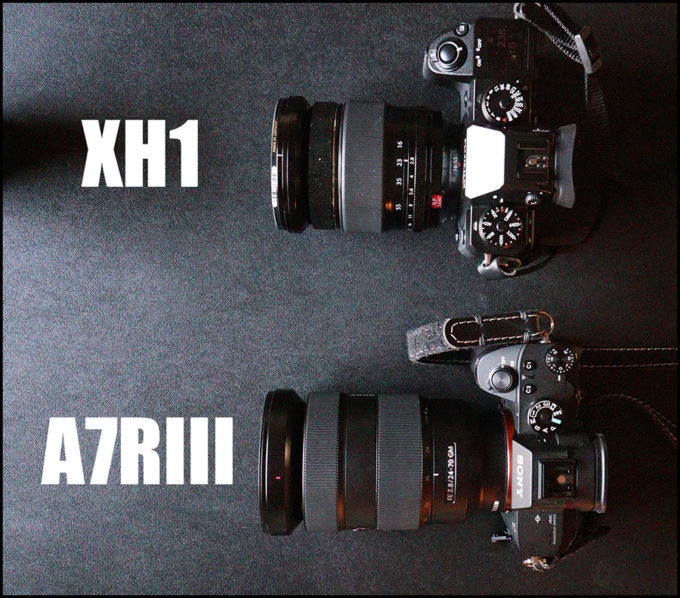
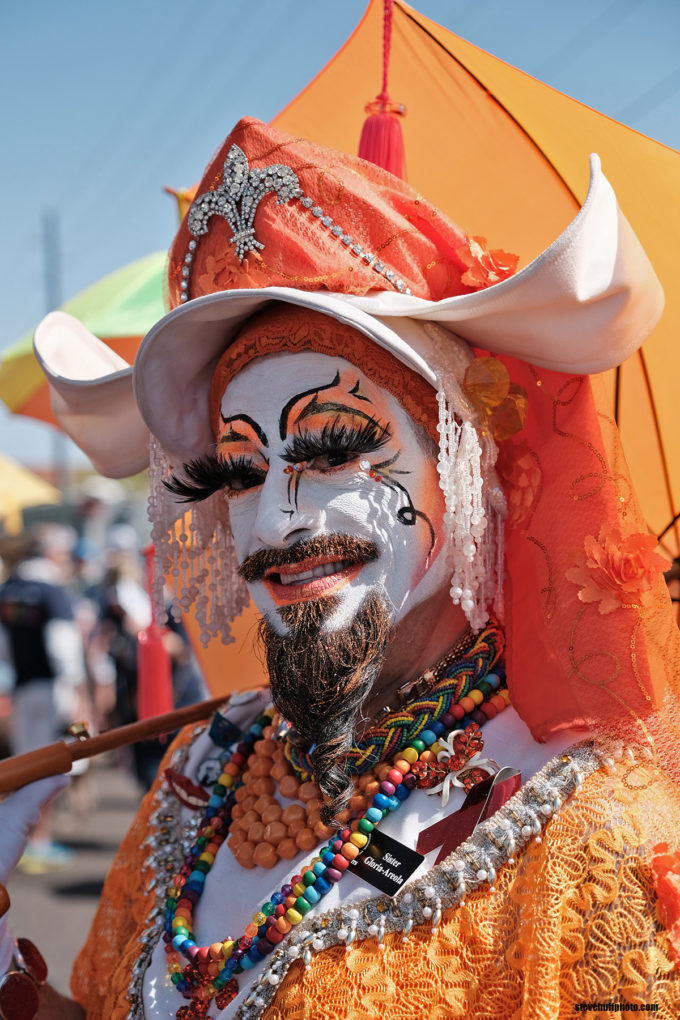

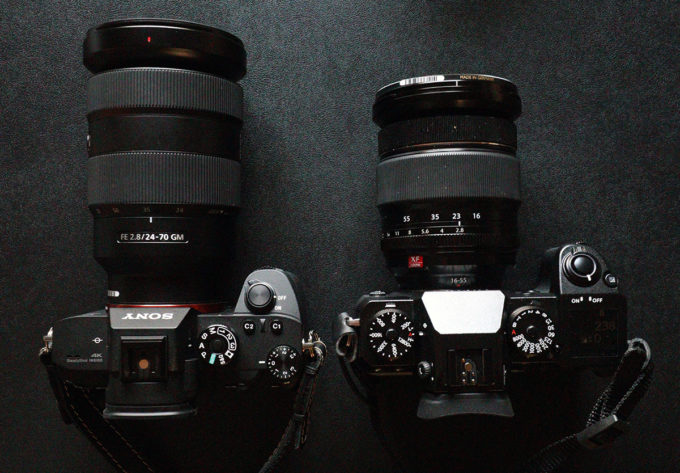
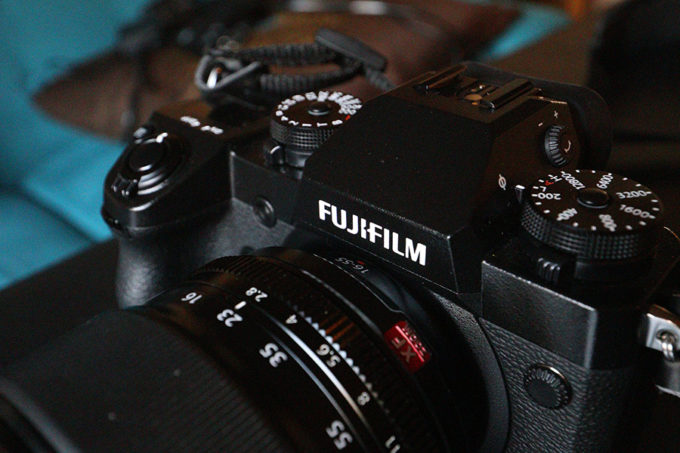
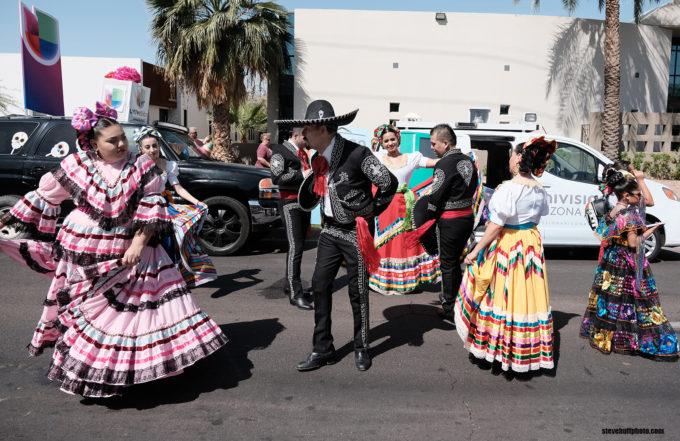
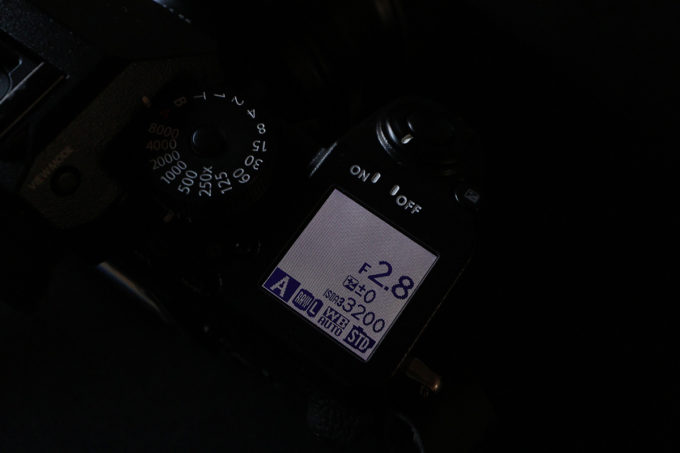
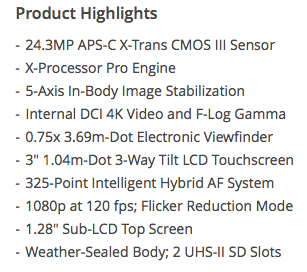



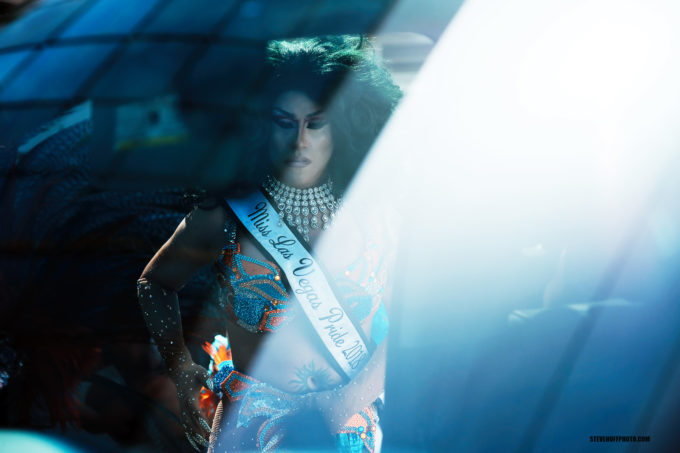
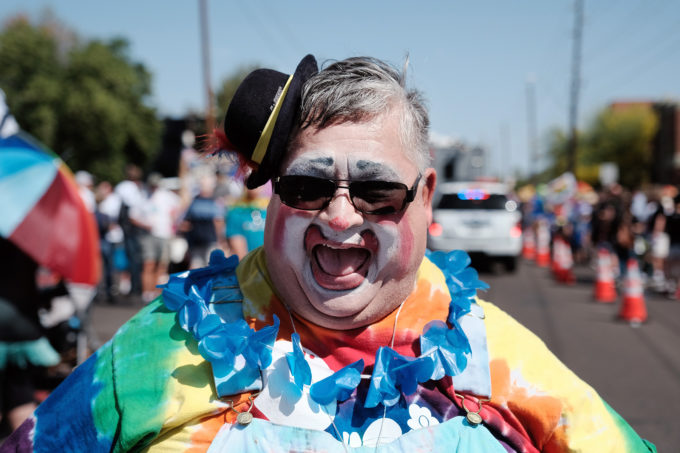
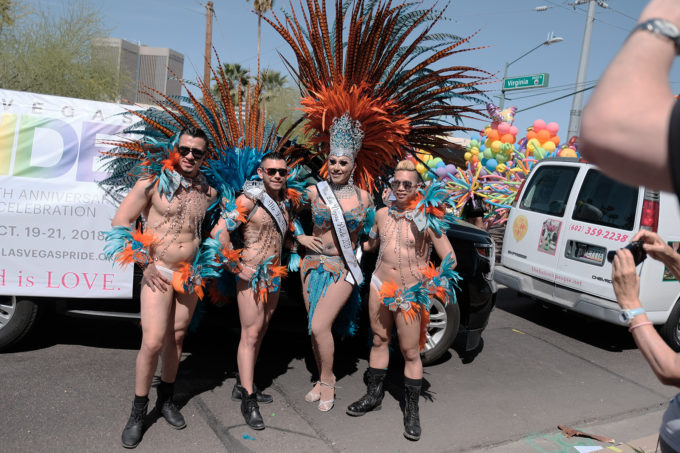

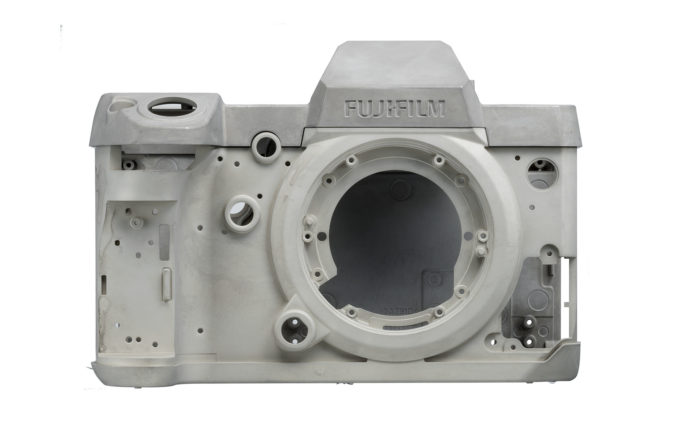
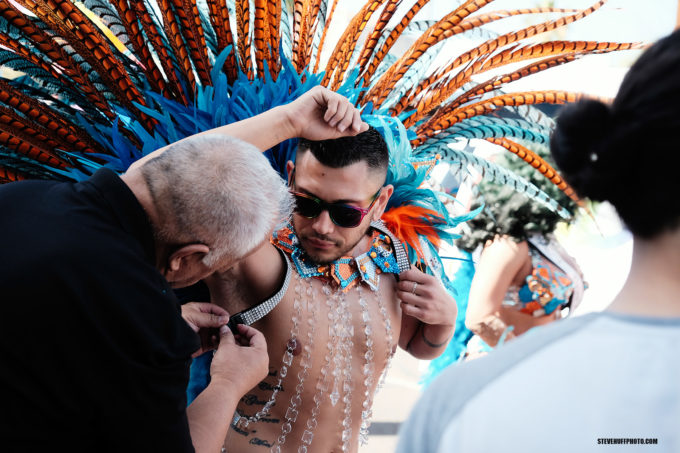
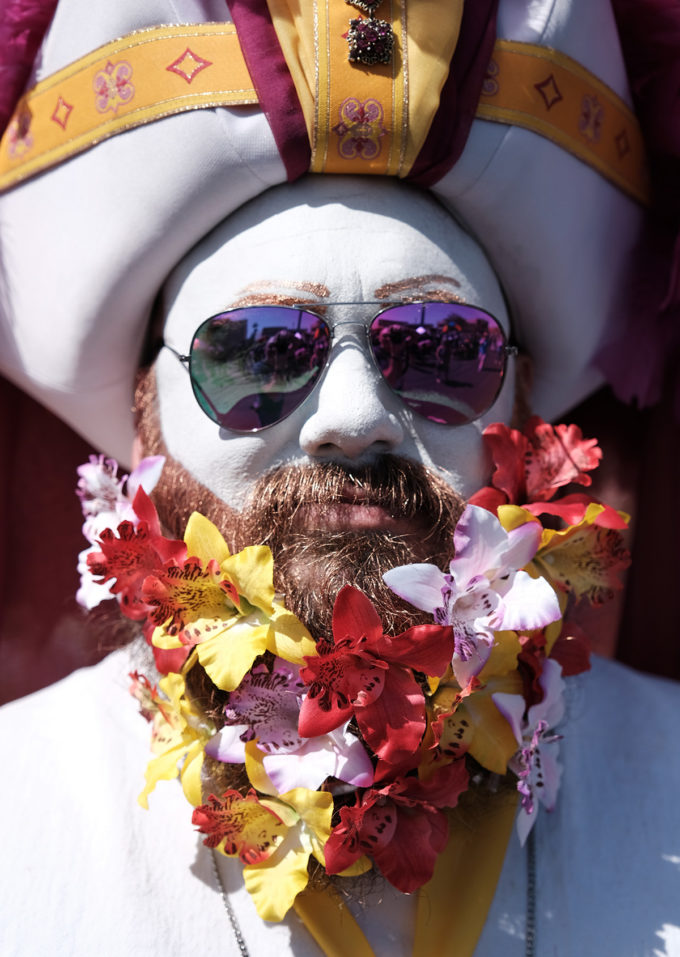

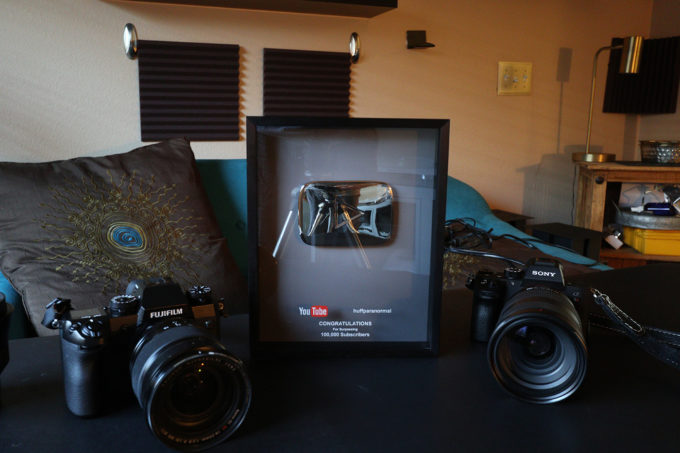
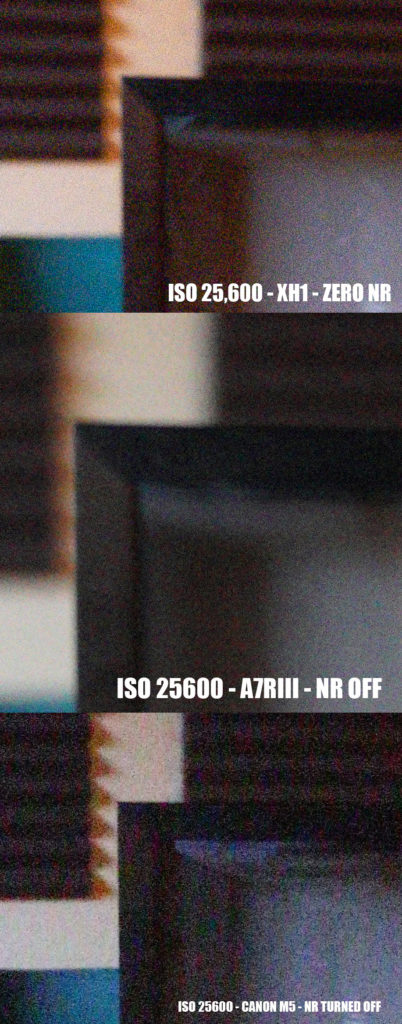
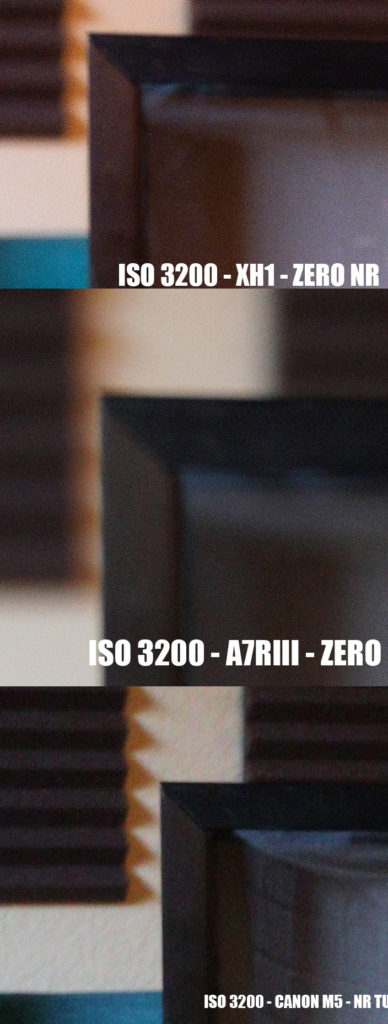
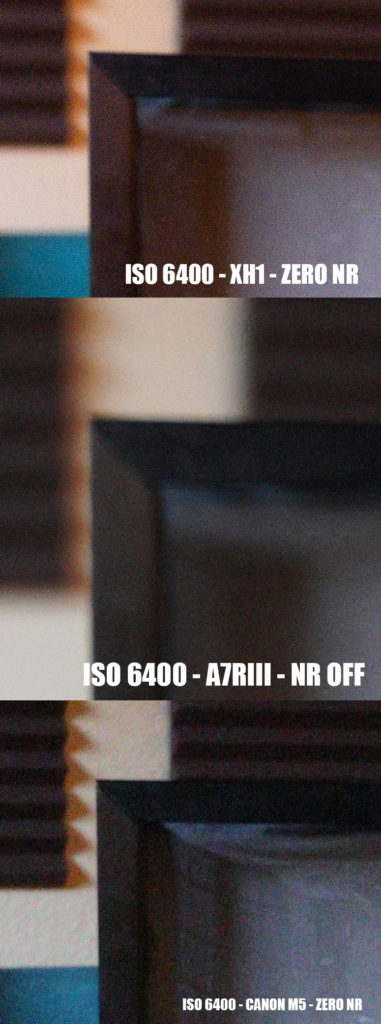
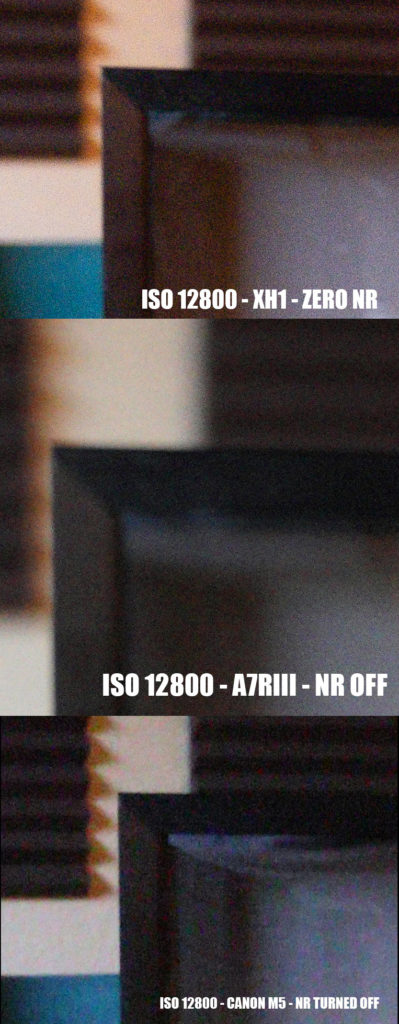
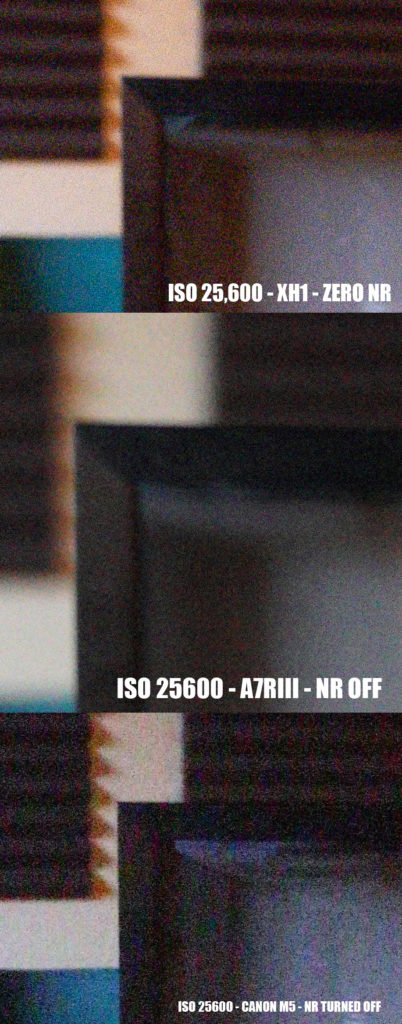
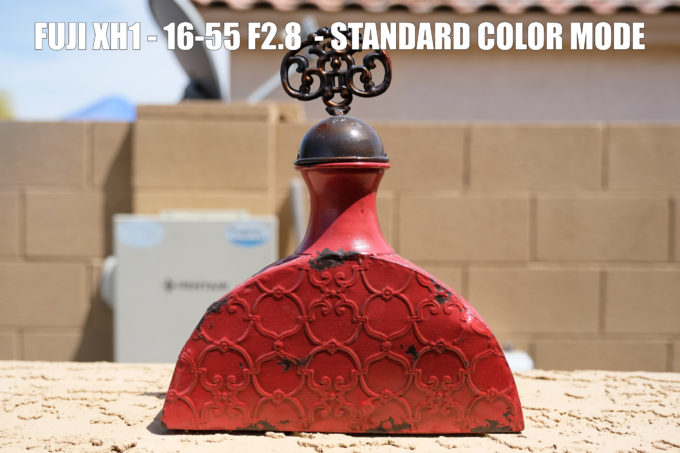
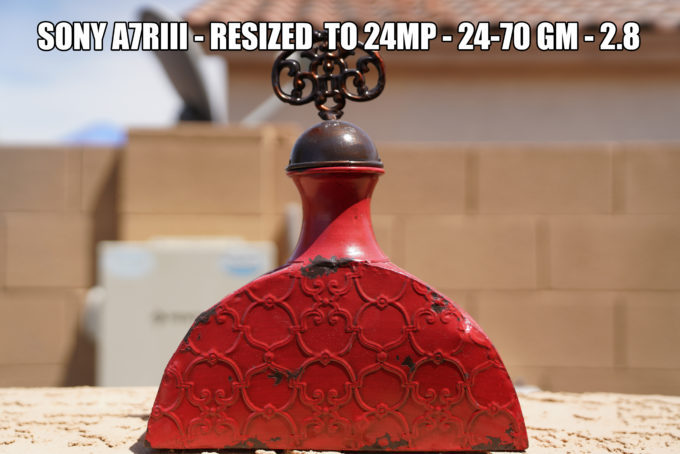



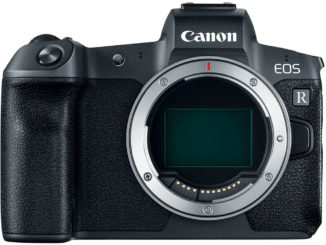
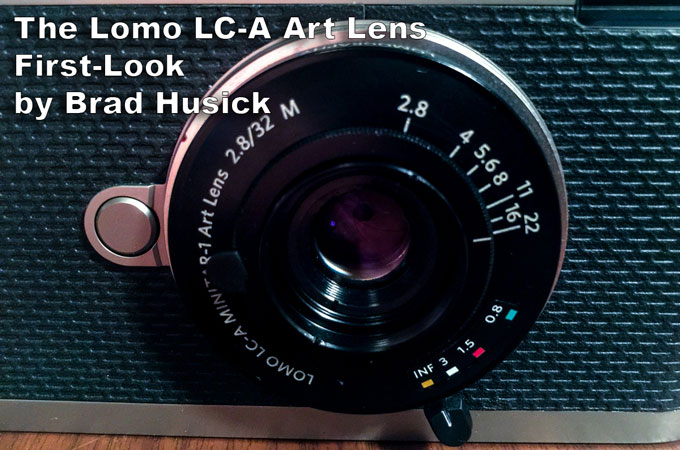

Hi Steve, thank you this detailed review. After some month and firmware updates which do you recommend now? XT2 with a 55-140 2.8 or the XH1 with a 55-200 3.5-4.8?
Regards 🙂
Hi Steve, have you used M lens on the XH1 with he Fuji M mount? I plan to use the the M 50/2 and 35/1.4 on the XH1..
I have not, as I prefer using M glass on full frame cameras as APS-C crops out some and doesn’t use the entire lens. Which would have its positive side though (no corner smearing)..so now that I think of it, I should be trying them out on Fuji bodies ; )
Hi Steve,
Excellent review. I just bought this camera two days ago and put it through a one day field test yesterday with the 16-55 which I have been using on a gripped XT1 since 2015. I have an X-Pro 2 as well, which works fine with my smaller primes, including a Summicron 28.
I sold most of my leica glass 3 years ago to free up sone working capital..
The reason I purchased the 16-55 is I was convinced that the lense although bulky would obviate the need for carrying 3 primes. My focusing eyes are not as fast as they used to be and I don’t like switching lenses and exposing sensors to dust. Needless to say, that lense delivered in spades. I carry it plus one prime for bokeh shots when needed.
Now, I have purchased the XH1 to host the 16-55 and the results yesterday were exactly as I anticipated, superb.
I read this article before I made the purchase and you reinforced my inclination.
Thank you,
WB7
Note that the 16-55 f2.8 lense is like a 24-82, not like a 24-70. The differcence is significant.
The Fuji 16-55/2.8 is roughly equivalent to 24-83/4.3 FF lens. And that’s why 24-70 is so much bigger and pricier. I still have my old Canon 24-85/3.5-4.5 lens, Fuji is more like that one. Canon is small, light and cheap. I used that Canon lens on Sony A7Rii and now on Sony A7iii with MC-11. I must say Canon is definitely sharper at the center but softer at the edges than Fuji.
Oh and one tip- if you set the metering to “average” (the logo is [ ] with nothing in the middle), the Fuji will meter close to an “expose to the right” deal- which is fantastic if you shoot RAW and want to recover highlights the majority of the time. The shots may be a bit under exposed but that’s how expose to the right works.
Do you also adjust the exposure compensation dial to be over by 1-2 stops to adjust the histogram or just shoot average mode and adjust in post? I shoot 200 default and 1600 auto iso in daylight and bump up to 6400 auto iso in dark daylight days.
The X-E3 has the same film simulations, color output and same sensor/processor of the X-H1. Same image quality.
Just to put some things in perspective, particularly for a camera that costs $899 USD.
I think the rep. you had for “fuji hate” was simply that many many times you seemed to have these strange experiences like lack of DR, etc. There was never such thing with Fuji. Fuji 16 MP X-trans is based of Sony’s sensor used in Pentax K-5 and other Sony 16 MP cameras, and this one is based of the same A6300/6500 (notice the whole “copper wiring to lower noise at high iso deal” for both). Both of those sensors are great, period. In all the cameras that use them.
The one thing Fuji really needed to level up drastically was AF and overall speed, and they have done that all the way to the X-E3 – even if the X-T2/X-H1 operate even faster with the battery grips.
All written here may be accurate (I really don’t know as I have not used any of the two cameras compared), but for me, the pictures shown here could have been done with almost ANY digital camera, even an iphone (perhaps not for prints) Artistically or from the technical aspects needed from a camera to make these pics, almost anything would do.
I love when people leave comments saying this, and it has been said maybe over 1000 times here, and over 20,000 times on articles I have seen elsewhere. Lots of talk, but no proof of it. Show your work! Please. Send me a post on your iPhone photos that beat any $2000 camera made. The fact of the matter is, no, there is no phone made that can beat any camera like this, or in the same class. For one thing, phones are awful in low light. Period. Try cranking up to ISO 12800 on a phone. Oops. Try getting some shallow DOF or using an f/0.95 lens on a phone. Oh wait, you can’t. The dynamic range of a phone’s imager is awful as well and can not compare to any modern day digital camera. I can go on and on and on but the fact is there is no phone made today that can truly compete with a pro level camera in any area. With a real camera one can change the entire look and feel of the images by changing lenses. Want shallow DOF? Get a fast prime. Want crisp sharp images? Get a zoom like the one used here. Phones are not versatile either. I love my iPhone X but even with its software trickery it can not even get close to a real camera. A camera is more than a few photo snapped with a zoom lens while evaluating it. ; ) It will be a long long time before a phone can really compete with a real camera.
I fully agree. And what about the framing with a phone, especially in in bright sunshine ??
Nice review. Just one comment, a 16-55 APS lens is not a 24-70 equivalent, but a 24-83 equivalent. While the difference is not huge, that extra 13 mm gives you a tad more compression with portraits if you can step back a bit to get the same framing. 70 mm FF is a bit too short for portraits in my opinion.
Currently shooting a Leica Q and CL+35/1.4… 28 and 50(equiv) being my favorite focal lengths, and often wanting to switch between them without switching lenses. These two cameras are relatively small and fun to hold and use, but really the reason they are not Fujis is the glass. To take the 35/1.4 and compare apples to apples (APS-C), while the Leica is a bit larger, the imperfections seem to have been designed to still be aesthetically pleasing… e.g. if I forget to correct CA on the Leica it isn’t as ugly, and if the bokeh is busy it isn’t in an unpleasant way. Both of these have really bothered me on the Fuji 35/1.4. The Q blew the 16/1.4 out of the water in terms of the ‘nuances’ of lens rendering, and the Q is smaller!
Anyway, writing this to say that I could easily be enticed back to Fuji if the lens game were taken up a notch. Maybe Leica will always put the most love into their lenses and that is just the world we live in…? Leica+Sony is not an option because I’ve had several Sony bodies and never loved holding them, and I like to have the AF option.
I will say that one thing that bugs me terribly about Leica AF and many AF implementations is the fly-by-wire acceleration which ruins the experience. The Q is the only camera I’ve used to get fly-by-wire right. It is so right that many don’t even believe it is electronic!
This is funny, i’m sure the Leica lenses are almost “free” of CA but keep in mind you can buy an entire fuji system with the price of one lens. Does the XF35 have CA sure, a bit at 1.4 for theres this option in the menu called Lens Optimization that fixes it in the body.
The JPEGs with the Classic Chrome preset are phantastic! I don’t use RAW anymore with my X-Pro2.
Review the Pentax KP Steve
Thanks for this review Steve.
I’m currently switching from Nikon D750 for Fuji (X-H1 or the future new X-T3) for reasons :
– size and weight : of course it depend of the lenses you use, but you can have a really nice light set-up with the f/2 23, 35 and 50mm. Really nice lenses, light et small, and relatively affordable.
– Jpeg quality and films simulation (Film bracketing is so great, you can have in 1 shot a superb B&W Across, a very nice color Classic Chrome, and 1 more choice)
Sony make really good Hybrids FF camera, the A7RIII is for sure better than the Fuji X-H1 for AF speed, tracking, low-light, and more … but it’s much more expensive !
Same things for the lenses : Sony make really good lenses, (Zeiss 55 f/1.8 for example), but again they are very expensive compared to the f/2 Fuji lenses (metal construction, weather resistant…).
I’ve had two of those f2 fujis….they aren’t that great to be honest. At close focus distances they are plain horrid.
And I thought the 1.4 versions were horribly slow to acquire focus…
Interesting. I have used the f2s alot, and continue to do so with the35 and 50. Now I admit that close focus (<1m) isn’t a particularly important use case for me. The 23 I found was fine but lacked a little character, not unlike the55 Sony. The much maligned(tech review sites mostly) 35 draws lovelypictures to my eyes and is tiny. The 50 isfantastic, again for me. I guess we all have different tastes. Small, solid, weather sealed, nice real world results.
You must have got a far better copy of the 35 than I did.
You aren’t going to save size/weight with X-H1. Just look at comparison: http://camerasize.com/compact/#567.699,772.448,777.681,ha,t
And you won’t save money either. Fuji is offering the lowest bang for the buck compared to any other system.
Man, much rather go with the Sony A7III. You’re comparing the Fuji to the A7RIII which is really not on.
Sony made very sure that dollar for dollar you get so much more with the A7III than with the Fuji. Size, weight, lenses, versatility, 3rd party support, AF speed, you name it.
Frank Lee The construction quality in the A7III is horrible to be a $ 2,000.00 camera, the back of the camera is covered in plastic, the fuji in this sense has better construction and better ergonomics, fuji has many advantages compared to Sony are not only benefits. ..
Both have advantages. Sony is much faster with AF. Sony is a much better video camera. Sony has much better battery life. Sony is more comfy to hold (IMO), Sony is much better in low light (I mean LOW light). Sony is full frame and works much better with adapted lenses from Leica, Nikon, Canon, etc. The Sony has MUCH faster AF-C performance. As for the Fuji, it is larger, heavier and more blocky but does feel more substantial in build over the A7III (Though not the A9). The Fuji offers great JPEG quality out of camera, with the typical Fuji colors and rendering. Fuji has a nicer EVF. So it all depends on what you want. No one is having issues with Sony build quality, so it is more perception that anything. It’s not something you ever read about or see. No issues. But this Fuji, unlike Fuji’s of the past, feels more substantial in the hand so yes indeed I would say build feels better with the Fuji. But almost everything else, Sony wins. The A7III IMO is the best $3k camera you can buy today at $2000. I am not a huge fan though of the Sony body style, or. the button placements and menu system. Fuji wins here as well.
Hi Steave. I’ve tried this fuji x-h1 and i like a lot of things about it, but one thing scarry me. Zomming in jpg i found the fine detail strange, in particulary skin detail seem to be plastic, irreal.
do you notice it?
maybe is x-trans sensor?
maybe is applied a default noise reduction?
I have noticed it in the past, but it is so much improved from the older sensors I do not see a problem at all. I always have noise reduction OFF on any camera I use.
This is a myth nowadays .
On all my cameras I turn NR off. Having the XT2 I do not have any of those plastic or weird things that I read online.
I don’t know on previous generation Fuji cameras since the XT2 is my first Fuji but what I can say is that it is significantly better than my PenF in terms of colors, definition and low light .
Love the addition of the IBIS on the XH1..
Hi again Steve, I meant to ask in my previous comment whether you’ve tested the Eterna simulation for stills. Classic chrome has been my favourite on the early models but I’m finding Eterna intriguing. Stephen
Hmm not yet.
The X-H1 is the first digital camera I want to shoot. It handles so much better than the X-T bodies and its EVF is the first I’ve found comparable to an OVF. The experience is the closest so far to using a 35mm body. The A7 III may be a similar price – and I gave it much thought – but its advantages are offset by bigger and heavier lenses, especially if those lenses are going to be Sigma Art. Couldn’t be happier at the moment.
I sure appreciate a camera that can hold the highlights like that.
Trying to figure out why the shots in bright sun look like bright overcast. The brightest areas are so white, and not tilted toward yellow – as whites normally are, in the sun. Maybe this is a quirk of that Classic Chrome preset.
Or maybe the autowhitebalance does a great job.
Outside, I do trust my X-Pro1, X100T and X-T1 absolutely, but the moment I step indoors, I have my grey-card ready
“Or maybe the autowhitebalance does a great job.”
Not sure what you mean. You mean you _want_ bright areas, on a sunny day, to be neutral white to very-light-grey?
To me, that makes a sunny day look like a bright overcast day. Imho, scenes with direct sun need to look warm – like most camera’s would render, by default.
Maybe you think I’m attacking your favourite camera, but I’m just suggesting the one preset is quirky.
Hi Steve,
Read two other reviews on IBIS. It showed side by side Fuji much smoother than the A7Riii. Would you please address in your next segment. The difference was dramatic. Almost to the point where it seemed the Sony did not have it
Thank you,
Wes
I agree, the Sony almost seems as it doesn’t have it. The Olympus bodies are dramatic, and the best implementation and the Fuji is right in the middle. It may be due to sensor size.
As a Fuji user for several years I took the plunge and bought the X-H1 a few weeks ago.
I am thoroughly enjoying it and consider the extra ‘heft’ a plus point, as Steve says – and I too think that the shutter release is a delight. Certainly the build quality is very satisfying.
Batttery life is not good, but I don’t find carrying a few extras much of a problem – without resorting to the grip.
Fuji lenses do, I believe, represent great value for money and perhaps this is not always sufficiently recognised.
But what’s also not realised is half the lens line up is in bad need of upgrading. With sloppy aperture barrels, noisy AF. ThE newer F2’s are also only average at best.
I agree there as most of the olde lenses are the ones I had issues with. Noisy, slow, felt cheap…
Steve,
Great review and much food for thought if in the market for a new toy. One question…please your thoughts on this particular model when considering their line of lenses which seem quite extensive, plus on the smaller side, with aperture ring, etc. http://www.fujifilmusa.com/products/digital_cameras/x-lenses/#See_All
Thank you,
Wes
Fuji colors are often vibrant and interesting and skin tones usually look good to me. It is entirely a matter of personal taste and perception but many Fiji images look bitingly sharp to me in a way that almost hurts my eyes. I realize that others may prefer this look but for the most part, it is not a look I enjoy. Just one opinion.
You can always tone the sharpness down. Fuji gives you the option.
Great to know you are enjoying the XH-1. I did consider this for all the reasons you like about it so far, until I heard the a7lll coming. I don’t mind the size (actually, a7 series are too small with no place for my pinkie), but it’s the battery life that drew me toward the Sony. No way am I getting a battery grip. Defeats the purpose too much.
Steve, you also mention the GM lenses to be better than the Fuji here. Since Leica just announced the 16-35mm for the SL, are the GM as good if not better than the Leicas?
Hey Aki, I have not tried the new Leica 16-35 but I would guess that it will be the best 16-35 of all time, also the heaviest and largest! Looks like a gorgeous lens. The Sony A7III, is a better option that this Fuji in the grand scheme of things…full frame, longer battery, faster and smaller. The Fuji will be for those who don’t mind APS-C (It has its benefits), and want the Fuji color and the external body controls. Tough to go wrong with either though the Fuji has more charm ; )
Steve, thank you for your reply. I need a fast focusing relatively light zoom for travel and family photos (3 year old non stopping kids), and considered the XH-1 for its wonderful colors OOC, but that is out for sure simply due to the battery life. I had a share of bad experience with the a7r2.
I actually have a few Leica M and S lenses and thought the SL would be a great backup in addition to those bodies but the slower and heavier lense of the SL vs the Sony GM line prevents me from going that route. Hoping for SL2 to be that camera help improve the AF from what it is now but probably another year of waiting for it’s release at least. I suppose for autofocus stuff, I should just go for the Sony and it’s GM lenses. As much as I would have liked to it just does not seem right to get those SL zooms with that AF missing shots of my kid when you can get the Sony system that will deliver.
Love to hear your opinion on the Leica SL zooms vs the Sony GM zooms. Cost aside, the size, weight, and speed seems to favor the Sony and maybe the performance to the Leica? Thank you again for your time!
Thanks. Leica SL Native lenses are some of the best I have used. They are just large and heavy, making it to where I do not want to use them. IN a studio they would excel, every day or street? No. But I feel the Leica SL glass is up there with the best there is.
Aki, I have an SL with the 24-90 native zoom and a 13-months-old and a 9-year-old children. I don’t miss many shots because of focus, I use often continous focus with face detection and as long as they show the face and not the profile it works great. Otherwise manual focus using the joystick to autofocus when I need to also works great. I am extremely satisfied. But I have not tried the A9 yet so I cannot compare.
Hi Steve,
Great review. I am very tempted by this camera now.
Would you choose this or the Olympus Em1.2?
It seems that the Fuji colors are better, also low light will have the edge on the Fuji right?
Thanks
Eric
Well, between those two I would have to go Fuji. It is larger and boxy in design but has charm, and the fantastic color options that are very very good. I could see having this with 2-3 primes going from wide to mid tele. It will beat the Olympus in low light, and is about as fast in AF. I have always loved micro 4/3 and Olympus, but I have to be honest. There is so much competition these days for them from Sony (A7III) and Fuji (XH1). It really comes down to what you shoot, and what your needs are. The EM1 MKII is very capable, just has weaknesses due to the smaller sensor. The Fuji DR seems damn good as well!
Great !
I am going to buy this Fuji, I really love the design of the camera and I will pick the 16 55 f2.8 as my go to lens.
Also I shoot a lot of videos and this Eterna simulation sounds great.
Cheers
The 16-55mm is a beast of a lens. Just came back from a 2 week trip to South Africa where I took it and the 100-400 (also a fabulous lens) but the 16-55mm was a real eye opener, I had not had chance to put it through its paces properly before the trip, and decided to take the plunge and not take anything else apart from those two lens). THe 16-55mm really is like having 4 primes in one lens, its stellar at 16/23/35/and 55mm great rendering, super sharp and much faster AF than any of the existing primes except the 90mm. Now I am looking at my 10-24mm, 35mm and 56mm lenses and giving serious thought to whether they still have a place. The 35mm will stay as although the AF is slow compared to the 16-55 firmware the new bodies have improved its performance and I still love its low profile and rendering for street. However the 56mm days are now looking numbered as due to its slow AF it is now only used for studio work at F8 and above taking away its main distinction F1.2 away from it, I also have the 90mm which is a nicer rendering lens than the 56 imo. The 10-24mm will now only stay for video as its useful to have that wide an angle in tight spaces, for travel photography the 16mm end of the 16-55 is more than enough. So the 10-24mm might go and be replaced with the 12mm from Samyang. All in all starting again I would say that an X-h1 with the 16-55mm is a very compelling pairing that you would be hard to beat at the price point.
These images take me back to my Tokina 16-50/2.8 PRO DX days.
I pulled up the optical design diagrams and wasn’t surprised to see that the Fuji 16-55/2.8 has an extremely similar design to the Tokina.
Wow, Steve! Surprised at the gushing review. I just switched from Fuji to Sony for an A7RII (wanted the extra resolution + dynamic range since I mostly shoot landscape / cityscape). From your past love of Sony’s I was hoping for affirmation on my decision 😉 and instead you’ve even got me half second-guessing!
DO not second guess! The Sony is the better bang for the buck. Full frame, faster, better low light (though it’s pretty close), much better battery life, EVF is about the same. What you gain with the Fuji is the color modes, and external controls on the body. It’s the best Fuji has ever made but the Sony cameras still offer more. All depends on what you want out of a camera really. I still have my Sony ; ) It’s not going anywhere. But this shutter on the Fuji is something special, I will say that!
Great write up Steve.
May I ask how you feel the xh1 compares with say the Olympus em1ii with the Oly pro grade primes and zooms in terms of color, tri x and slide film modes, sharpness, pop, usability, speed and just overall experience. In the past you had said that you’d choose micro four thirds over any APSC starting out, is this still the case with respect to xh1, em1ii, pen f and latest Panasonic g9? Thanks for your time and glad to see you back falling in love with your job again 🙂
Yep, I have always said I would stick with M 4/3 and Full Frame. I never found any APS-C that I could bond with. But this camera, may be the 1st to change my mind for APS-C. It’s lovely, though big, and boxy in shape. The 16-50 makes it feel larger. So it will be bigger than the Old setup. BUT, yo gain these color modes which no camera can match or replicate. You gain great video for what I think is the 1st time in a Fuji. You also get a great large EVF, amazing shutter, dual slots, and speed! The XH1 with 2-3 fast primes would give you better low light performance, same speed as the Oly (maybe faster), the Lovely Acros simulation for B&W and a well made solid weather sealed body. I did have a G9 here for a few days and could not jive with its size for what it is. It was nice but I’d take the XH1 today over Micro 4/3. First APS-C to do that for me. (I still own the Old system and lenses btw).
Thanks so much for your response Steve!
May I also ask in terms of speed if you used the boost grip / enabled the performance mode in the camera body and what difference it made to the overall speed. My understanding is that there are two performance enhancing modes that are not enabled by default. The first is ‘performance mode’ (enabled in the menus) and the second ramps the AF, framerate and viewfinder refresh performance up a second notch with the boost grip. Personally that doesn’t interest me as I think they should just enable ‘boost’ out of the box.
Finally you may end up wanting to keep the Fuji for a little longer…. fujirumors is suggesting some major AF and speed improvements in the next few days via a ‘kaizen’ firmware update.
Hi there is a lot of confusion over the boost or performance mode. They are essentially one and the same thing. The overall title is performance mode and it has two settings, standard and boost. Without the grip the boost setting boosts the speed of the AF. The grip if added then enables the additional increases in frame rate and viewfinder refresh when you switch on boost mode, it also adds a dedicated switch to enable boost mode on the grip itself. X-H1 in boost mode without grip gives you fast AF out the box, and unless you are shooting sports where you need high continuous frame rates with no blackout then its not a real advantage. The viewfinder does not black out in Continuous Low or Medium only in continuous high, and with the grip not even in that mode.
Steve – Great review. One thing – In the high iso comparison the Sony looks out of focus. It is not a dof issue as far as I can tell.
I wasn’t testing the focus, and pulled the same OOF spot for each (both are OOF there, the sony shows more OOF due to the DOF). Does’nt matter as the noise will not be out of focus, and this was strictly a test for ISO noise. It was a better sample in the frame than the in focus area.
The first picture (Sister Gloria Areola) is just wow. I love my A7, but I have never seen so nice colours out of cam.
Good review Steve!
Hi Steve,
i see you enjoyed the Pride Parade, lovely Pictures.
Yes, Fuji is easy to use and if you consider buying lenses to that body, it is much cheaper than the Sony also. Fuji is about lenses, so they have a very high performance, even the cheaper ones. It doesn’t make too much sense using Fuji bodies with other brands. Even the three Zeiss lenses for Fuji are not better than the nativ lenses imho. The missing detail is more the fault of the sensor than the lens i think. You can easily compare the cameras when using the same lens with an adaptor on both the Sony and the Fuji.
One remark about using AWB. When you use the quick access on the screen, just swipe to the right and you can directly adjust the WB to your liking an a very quick way. Maybe try this with the Provia Standard setting and the colors will be more vibrant in favor to the Pride Parade?
Something is wrong with the standard color… Is this a pale color limited edition? Using Leica…this is like day and night…
That’s the “classic chrome” film simulation for the jpeg. You can fine tune it as you wich before or after in camera, other presets are available and are more “punchy” with more contrast and saturation.
for Steeve : have a look at the xt20 + 35mmf2 combo , it’s like a x100 50mm equivalent ( without ovf of course )
This is not standard color but one of the Fuji Film simulation that digitally replicate the colors of their different films ( here classic chrome)
The only one using standard is the comparison at the bottom with the Sony.
Thanks, Steve. I was waiting to see when you’d write about this camera. Here’s to part 2!
I think that the Eterna simulation is going to be a big, big plus. It’s right there in the camera, no need to do anything except activate it. If you’re careful with exposure, the color timing will be a piece of cake, as there would be very little to do.
Fuji, Olympus, Panasonic and Sony now have some serious competition: the Blackmagic 4K Pocket. It’s nowhere near as small as the original HD Pocket Camera, but it costs less than most mirrorless bodies and it does 4K ProRes and RAW. I dare say that this new camera from Blackmagic could actually be a great stills camera.